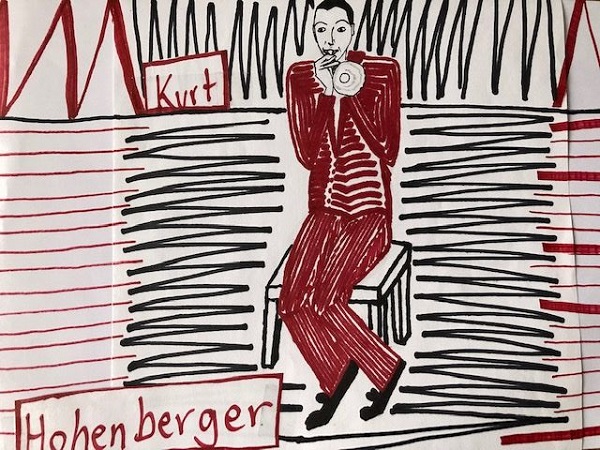BERLIN HAT DEN JAZZ, WEITERHIN!?

Kurt Hohenberger was born in Stuttgart in 1908. In the 1930s and 40s he was considered the most important jazz trumpet player in Germany. He gained practice in Berlin in the orchestras of Marek Weber, Dajos Béla and Oskar Joost. The last one continued to be successful here after 1933. (cf. Knauer, Wolfram, Play yourself, man!, Stuttgart 2019, S. 99)
In Berlin during National Socialism
The Gauleiter of the NSDAP of Berlin and Propaganda Minister Joseph Goebbels was an unparalleled populist and intriguer. And he had his own ideas how to deal with swing in Germany.
Kurt Hohenberger und sein Solisten Orchester
From 1933 Kurt Hohenberger performed with his Solisten Orchester in the Quatier Latin, a fine bar for an upscale, international audience at Kurfürstenstraße 89. At times, pianist Fritz Schulze and trombonist Walter Dobschinski were members of the band. Diplomats liked to meet here because of the combo‚s well-known, stylish swing. it was considered to be the most authentic one in Germany! The place was just as popular among SS officers who sponsored Kurt Hohenberger. In 1936 he officially blew the fanfare at the Olympics in Berlin. His combo could also be experienced in the Varieté Wintergarten. (see (cf. Bratfisch, S. Rainer, Jazz in Berlin, Berlin 2014, p. 100)
Kurt Hohenberger in der Goldenen Sieben
In 1934 Joseph Goebbels founded a Nazi-jazz band for radio and records. This way he wanted to keep radio-listeners away from listening to hostile-senders. Like the BBC because of the news! The Goldene Sieben should deliver a moderate swing, lively, but not too wild. Kurt Hohenberger on the trumpet and Georg Haentzschel – a little later – on the piano actually had the swing! The band quickly became one of the most popular entertainment.orchestras in Germany.
But the pianist Willie Stech was the head of the ensemble, the program-director at the Deutschlandsender and NSDAP-member! And he provided rhythmically and melodically catchy pieces in the Nazis` sense. But that didn’t always work. In 1935 the Deutschlandsender received so many complaints from rural areas because of the “hot music” that it deleted the Goldene Sieben from the program. Now followed a record deal with Elektrola, tied to a performance-ban. The music became increasingly well-behaving and Schlager-like. But in 1939 the „model orchestra“ was dissolved. (cf. Knauer, Wolfram, Play yourself, man!, Stuttgart 2019, p. 99 ff.)
During the war
The trumpeter played with his combo in the first years of the war for troops-entertainment in Holland and France. When the “Reichsmusikkammer” founded the German Dance and Entertainment Orchestra in April 1942, Hohenberger and many of his musicians were there. He was drafted in 1943 and became a prisoner of war. ((cf. Bratfisch, S. Rainer, Jazz in Berlin, Berlin 2014,p. 193)
The post war period
Kurt Hohenberger returned in January 1946 and continued to make American music in East Germany until 1960. In the 1950s, the jazz scene there was rather manageable. From 1937 to 1955 he acted as voice-leader at recordings by Telefunken, Amiga, Polydor or Bertelsmann (cf. (cf. Knauer, Wolfram, Play yourself, man!, Stuttgart 2019, S. 202). He died in 1979 back in the region around Stuttgart.
Kurt Hohenberger – Jammin – Berlin 23.12.1937
See also: ALL DARK – The New West